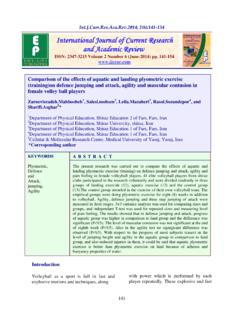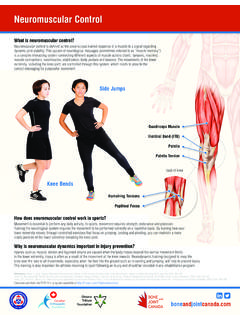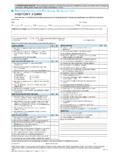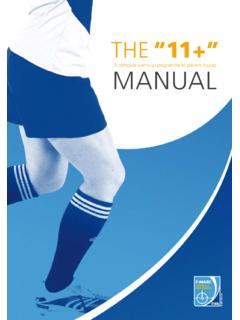Transcription of ACL INJURY PREVENTION PROGRAMS DR JUSTIN …
1 ACL INJURY PREVENTION PROGRAMS DR JUSTIN ROE, DR LEO PINCZEWSKI NSOSMCM ater Clinic Suite G02, 3 Gillies St Wollstonecraft NSW 2065 ph:02 9409 0500 Recent studies have documented that the incidence of ACL INJURY can be reduced by up to 70% with the implementation of a specific warm up program. We have found that the incidence of INJURY after 12 months from ACL reconstruction is 1% per year for the reconstructed knee and 1% per year for the opposite normal knee. This is higher than is seen in the normal population. This incidence is even higher in young patients who have their first INJURY under 21 years. The PEP program (Prevent INJURY and Enhance Performance Program) has been shown to decrease both first time ACL injuries and further ACL injuries after reconstruction. This program is a highly specific session that replaces the traditional warm up.
2 It consists of a warm-up, stretching, strengthening, plyometrics, and sport specific agility training. Athletes can reduce their risk of ACL injuries by performing training drills that require balance, power and agility. Adding plyometric exercises, such as jumping, and balance drills helps improve neuromuscular conditioning and muscular reactions which decrease the risk of ACL INJURY . It is important to use proper technique during jumping moves (jump straight up and down jumps without excessive side-to-side movement), and aim for soft landings. Optimally the program should be performed at least 2-3 times per week during the season. We encourage all patients after ACL reconstruction to familiarise themselves and their trainers with this program to prevent further INJURY . Basic Components of the PEP Program (50 metres each): A.
3 Jog line to line of soccer field (cone to cone) B. Shuttle run (side to side) C. Backward running 2. Stretching (30 s 2 reps each): A. Calf stretch B. Quadricep stretch C. Figure 4 hamstring stretch D. Inner thigh stretch E. Hip flexor stretch 3. Strengthening: lunges (20 metres 2 sets) B. Russian hamstring (3 sets 10 reps) C. Single toe-raises (30 reps on each side) 4. Plyometrics (20 reps each): A. Lateral hops over 2 to 6 inch cone B. Forward/backward hops over 2 to 6 inch cone C. Single leg hops over 2 to 6 inch cone D. Vertical jumps with headers E. Scissors jump 5. Agilities: A. Shuttle run with forward/backward running (40 yards) B. Diagonal runs (40 yards) C. Bounding run (45 50 yards) Additional details and supplemental replacement exercises available from the developers of the program, The Santa Monica Orthopaedic and Sports Medicine Research Foundation at Video examples of this program can also be found on Further Reading: Gilchrist et al.
4 (2008). A Randomized Controlled Trial to Prevent Noncontact Anterior Cruciate Ligament INJURY in Female Collegiate Soccer Players. Published in American Journal of Sports Medicine. 2008; Issue 36; pages 1476-1483 For further information contact Dr Lucy Salmon (Research Physiotherapist) at NSOSMC on or 9409 0500






